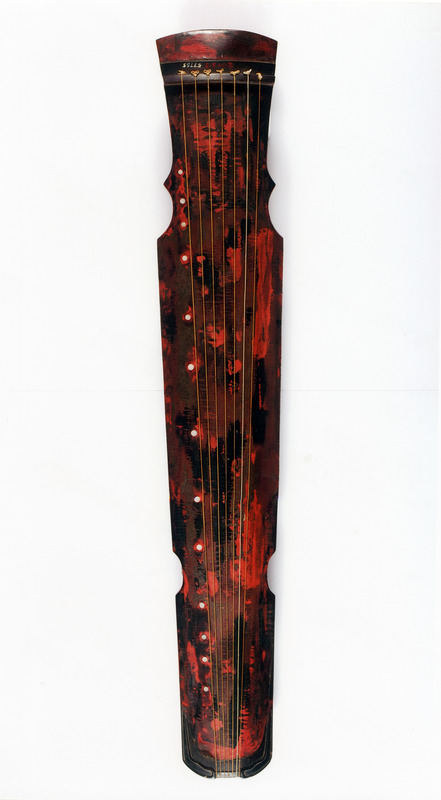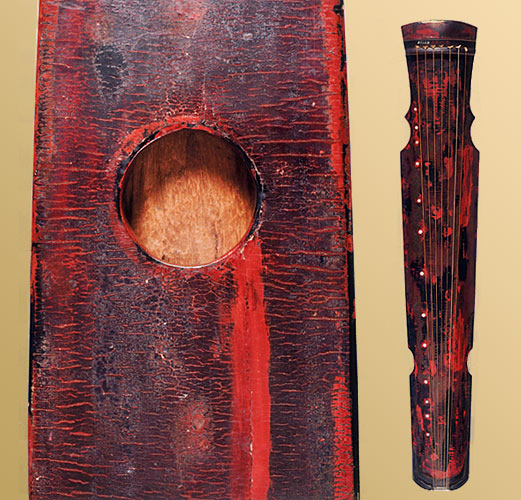“Du You”( Solitude and Seclusion) Seven-stringed Qin

Tang Dynasty (618—907AD)
Height: 8.3cm; Length: 122cm; Width: 22cm
Collected in 1963
The qin is a musical instrument that was played by a very small group of elite intellectuals in ancient China.
This qin is one of the few well-known qin in China that enjoyed the fame of “Hongbao” (refers to the best qin in Chinese).

On the back of the qin are the inscription of two Chinese characters of “Du You” (means solitude and seclusion) in wild cursive script in the middle of the shoulder; at the rear part of the instrument are poems and other words inscribed by famous artists.

This qin was in the collection of Wang Chuanshan during the turn from the Ming to Qing dynasties. A century later, in the Republican Period, it was obtained by Li Jing, a qin player from Hunan.
深入探索
The Art of Chinese Ancient Qin
The art of the ancient qin (also called Seven-stringed Zithers) is not only an art of music, but also the integration and accumulation of Chinese traditional culture. It has exerted far-reaching and wide-spread influence on music, aesthetics, social culture, thinking patterns, etc. in China; therefore, it is regarded as one of the most important representatives of Chinese ancient spiritual culture in the aspect of music.
The qin is a typical solo instrument, but it was also frequently used by members of the literati to accompany their chanting or singing. Considered the most important of the “Four Accomplishments” (qin, chess, calligraphy and painting), it was used by the literati for spiritual comfort and mental cultivation, and also served as an important means for expression of feelings and communication between minds.
In November 2003, the art of the Guqin was officially recognized as “a masterpiece of the Oral and Intangible Cultural Heritage of Humanity” by the UNESCO, which was the second Chinese heritage on the list after Kunqu opera.



